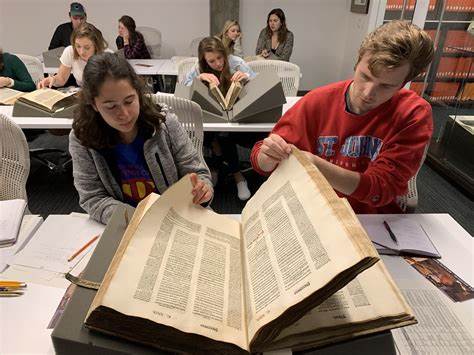Entering a U.S. classroom can be a heady experience. You will be part of a distinctly diverse student body, where you will engage in an informal exchange of ideas, and your professors will encourage you to think critically. This unique experience, called college life, will provide you with the opportunity for growth and learning.
For many students, particularly international students, unfamiliarity with the American academic culture might be slightly overwhelming. Our attempt through this blog is to orient you to the landscape of the college classroom culture, student-centered learning environment, and how an international student could thrive in this setting.
Understanding the diversity in U.S. college classrooms
The U.S. colleges and universities are known for their distinct feature to assimilate students from diverse backgrounds into the college fabric. The students accepted, come from varied backgrounds, races, religions, beliefs, ethnicities, languages, socio-economic statuses, etc.
The classroom is a melting point of cultures, each bringing their uniqueness. This intermingling exposes students to various perspectives and an understanding of cultural differences while teaching them the power of collaboration and respect for individual differences. This forms the training ground for how each student should successfully navigate the exponentially diverse arena of the workplace.
To achieve this, the colleges ensure that teachers understand each individual, i.e. their cultural background, learning style, and uniqueness. This forms the core of the classroom culture, which encourages student participation, effective communication, and a collaborative spirit.
Teachers are encouraged to maintain consistency in their communication with students, which enables them to improve their students’ learning experience. In many large institutions, characterized by large class sizes, this personalized interaction with professors becomes difficult. Understanding what kind of environment will you thrive in is critical before making a college choice.
Providing a student-centered learning environment
American colleges focus on the learners, creating a more engaging and effective educational experience. Students are given the freedom to choose courses that they find more interesting and in many colleges they can create their curriculum. One such example is Brown’s open curriculum. This approach allows students to be deep thinkers and “intellectual risk-takers.” The academic progression of students is based on their demonstrating mastery or competence of predetermined standards. This allows assessments to be meaningful and empowering. Forensic Entomology
Types of learning environment
Lecture-Based Learning
This is the traditional yet most common way to introduce content delivery. lectures have been synonymous with degree qualifications. A variety of approaches to lectures are being used to enhance higher orders of thinking and learning during class. However, many universities are reevaluating the efficacy of a lecture-focused approach to learning and the efficacy of other learning methods.
Seminars and Small Group Discussions
Seminars are often defined as small, discussion-based courses. Students are expected to complete readings and assignments before the class and discuss major themes or topics during class. These are more interactive and typically smaller than lectures. One of the most significant advantages of the seminar-style is that it encourages in-depth discussion on specific topics, allowing students to engage directly through presentations, debates, and collaborative analysis. This adds a unique dimension to the learning process.
Hands-On and Experiential Learning
This is designed to provide students with hands-on education to develop problem-solving skills and career insight that they can take into any field. Students analyze professional problems in real-time, evaluate them, and create value-added solutions. In many Business program Colleges, experiential learning starts on day one. Classmates build businesses in their very first semester.
Project-Based Learning
Project-based learning diverges from the traditional lecture style and is encountered within disciplines like Medicine, Engineering, and Urban Design towards the third and fourth years of study. Students may be presented with a prompt or a real-life problem and are then encouraged to interrogate it through inquiry and collaborate to hypothesize the origins of the problems and then propose solutions.
Independent Study and Research
Liberal arts colleges typically allow students to develop their courses. This entails identifying the topic or research question and area of study, explaining why or how the course adds value, designing assessments, selecting readings, and identifying a professor willing to provide guidance and assess the final works. At Brown University, this is called an ISP (Independent Study Project), but there is the option to pursue the same with a group of peers.
Tutorial and office hours
University professors are available during office hours for students to approach them with questions, potential research opportunities, or mentorship. This allows students to get to know their professors outside of their classrooms, personalizing the education experience and offering more meaningful opportunities for collaboration. Tutorials are usually designed in partnership with a professor and are more instructor-driven and structured compared to Independent Study and Research.
Cooperative Education and Internships:
Co-ops, as they are better known, are increasingly gaining popularity because of the opportunity for early employment placements they provide to students. Universities like Northeastern in Boston now accept only 7% of their applicants and have shot up the Forbes List of Best Colleges (now at #73) primarily due to their signature co-op program. The co-op program is exciting for students because it offers them the opportunity to apply their college education in real-world contexts.
How to succeed in your classroom
With the emphasis primarily being on creating independent thinkers, this academic freedom puts a sense of responsibility on students. Students need to be active participants in the academic community so that they can build their knowledge and understanding. It is in the interest of students to maintain academic honesty. Gaining knowledge ethically ensures learning is sound. Colleges have strict policies against plagiarism and cheating and students face severe consequences for violating these rules. Being aware of the teaching methodology of the college you wish to attend will help you plan how best you would leverage the opportunities.






